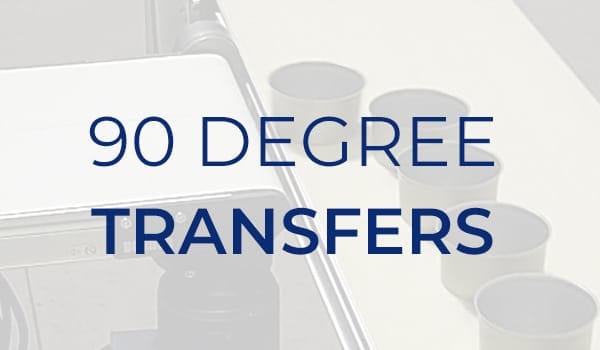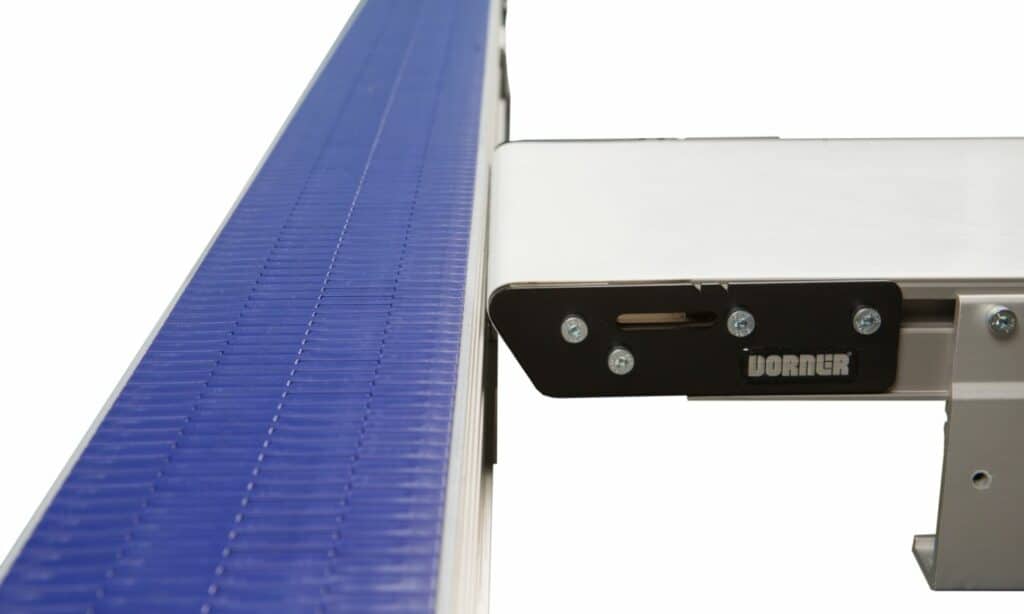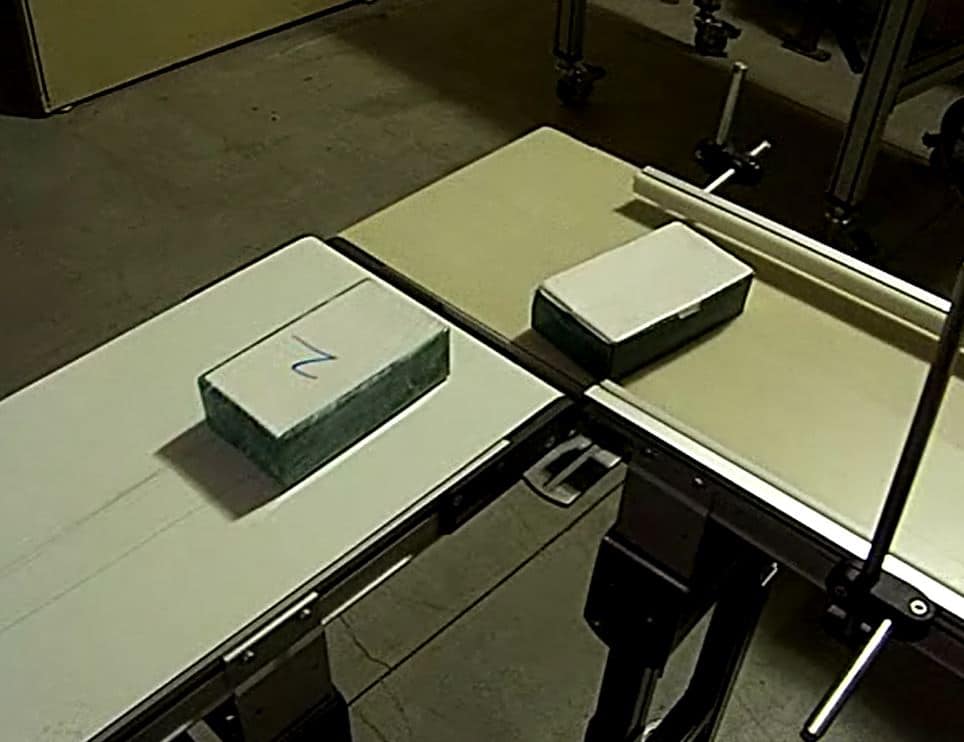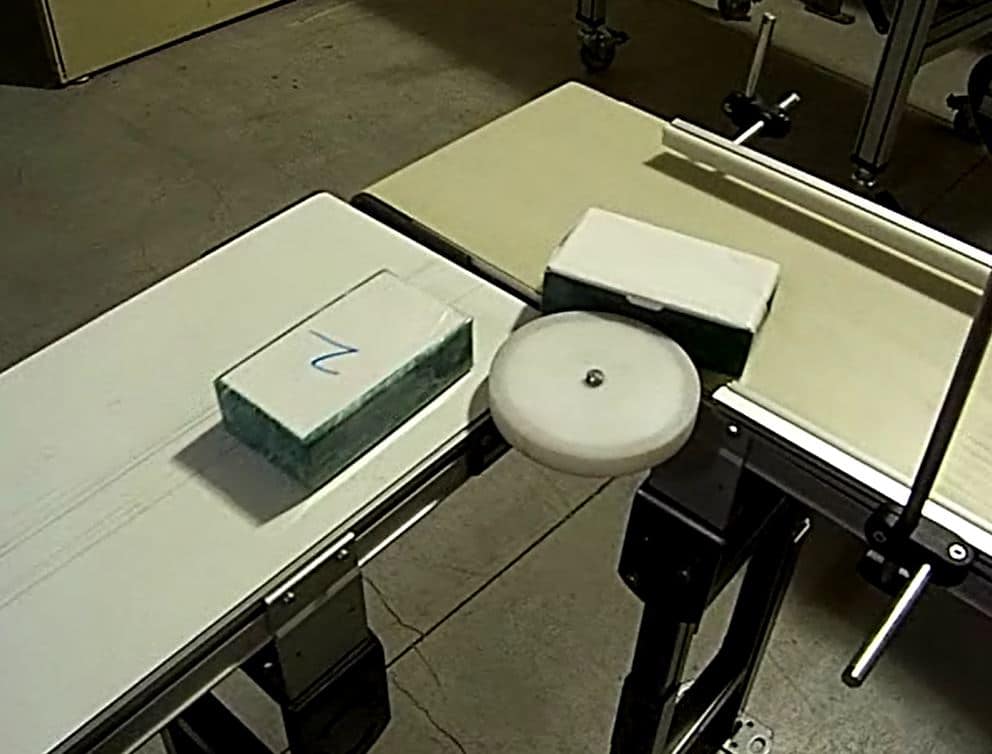
Transferring products is a necessity in many conveyor system layouts. Whether you’re transporting a product onto another conveyor line or moving it to another piece of equipment, there are a variety of different transfer options. The key is to transfer the product safely and efficiently.
![]()

One common, simple method is the 90 Degree Conveyor Transfer. This type of transfer operates from the belt edge to the frame edge of your conveyor system. Typically conveyor speed should be aligned closely, but it doesn’t have to be exact.
As long as your product is of a size that can easily transfer from one conveyor to a perpendicular one smoothly, this design can offer an easy and inexpensive solution to many applications.
A unique benefit of the 90 degree transfer method is flexibility of product orientation. Depending on your application and the next process, you may want to keep the leading edge of the product or rotate it 90 degrees. By speeding up the first conveyor, you can quickly transfer the product to the second conveyor and change the leading edge of the product. Or by using 90 degree transfer method and integrating a simple bump-turn, you can maintain the leading edge of the product.

Change Leading Edge by Speeding Up 1st Conveyor

Maintain Leading Edge by Using Bump Turn
In addition to 90 Degree Transfers, other Transfer Methods Include:
- Powered Transfers
- Roller Transfers
- Nose Bar Transfers
- Side Transfers
- Inline Transfers (or End-to-End Transfer)
- Pop-up Transfers
- Rotators
Ultimately the right transfer method depends on each product and application. Not sure which product transfer is right for your system? Contact Dorner to discuss the best way a transfer can optimize space, time, and efficiency within your application.





